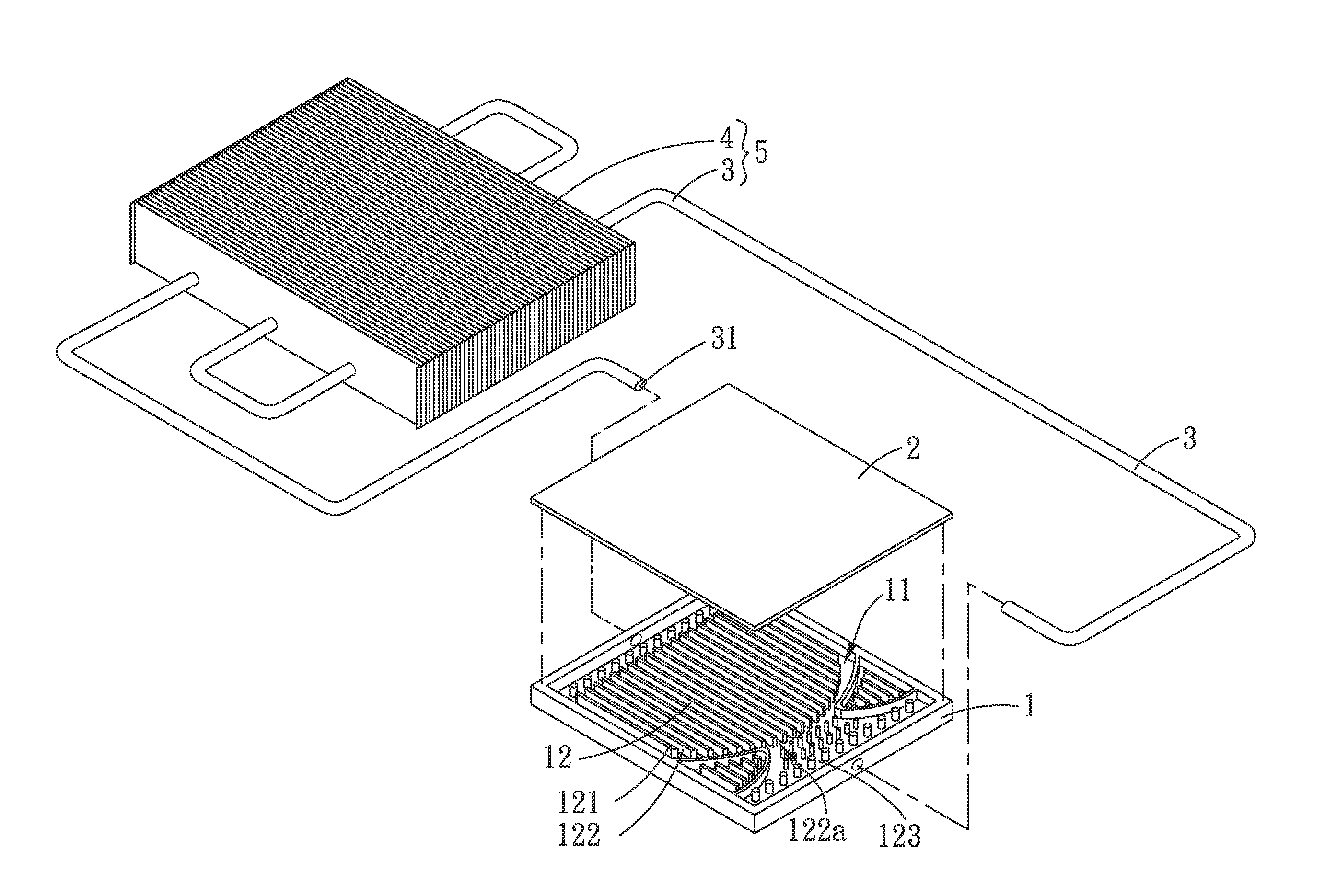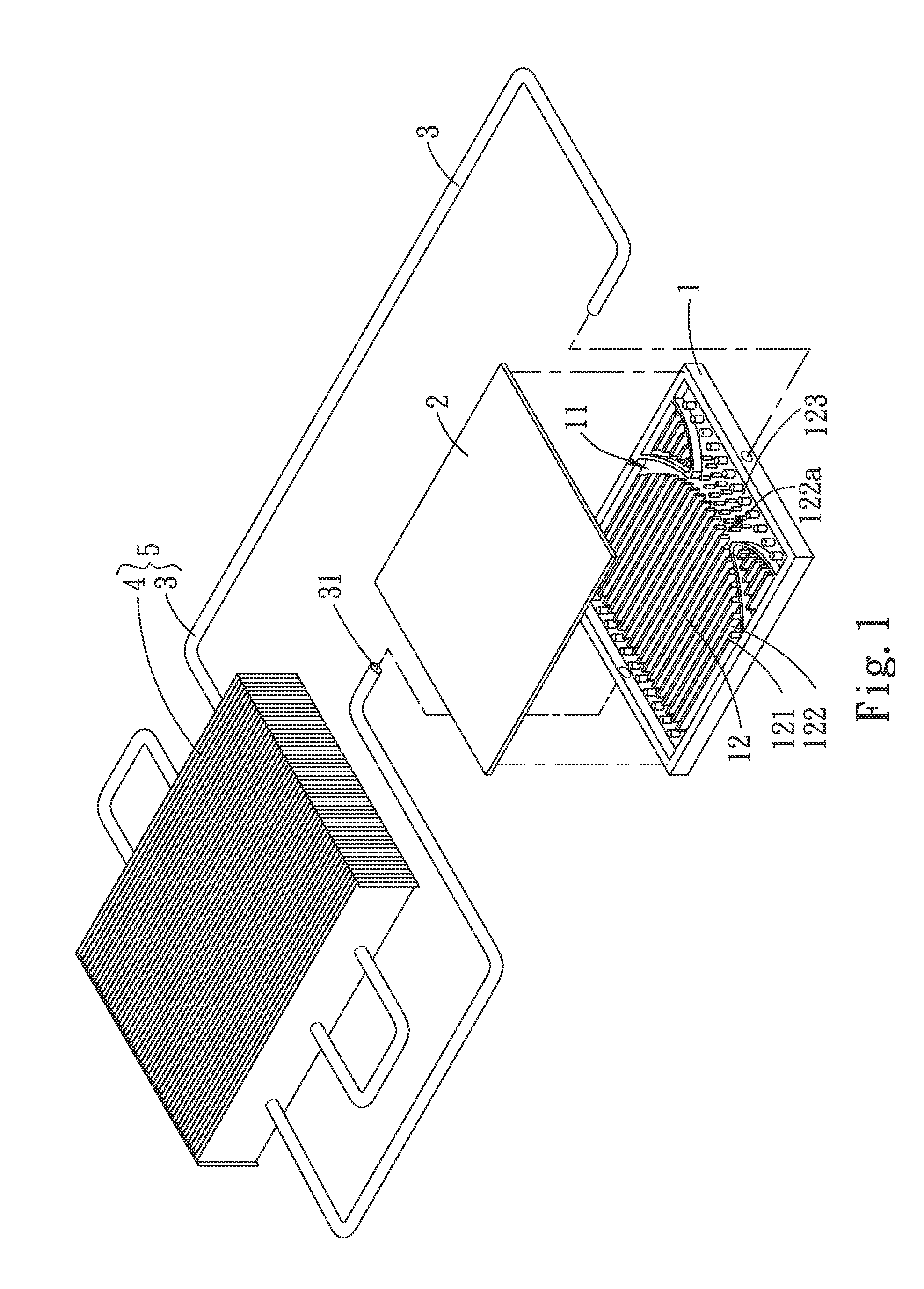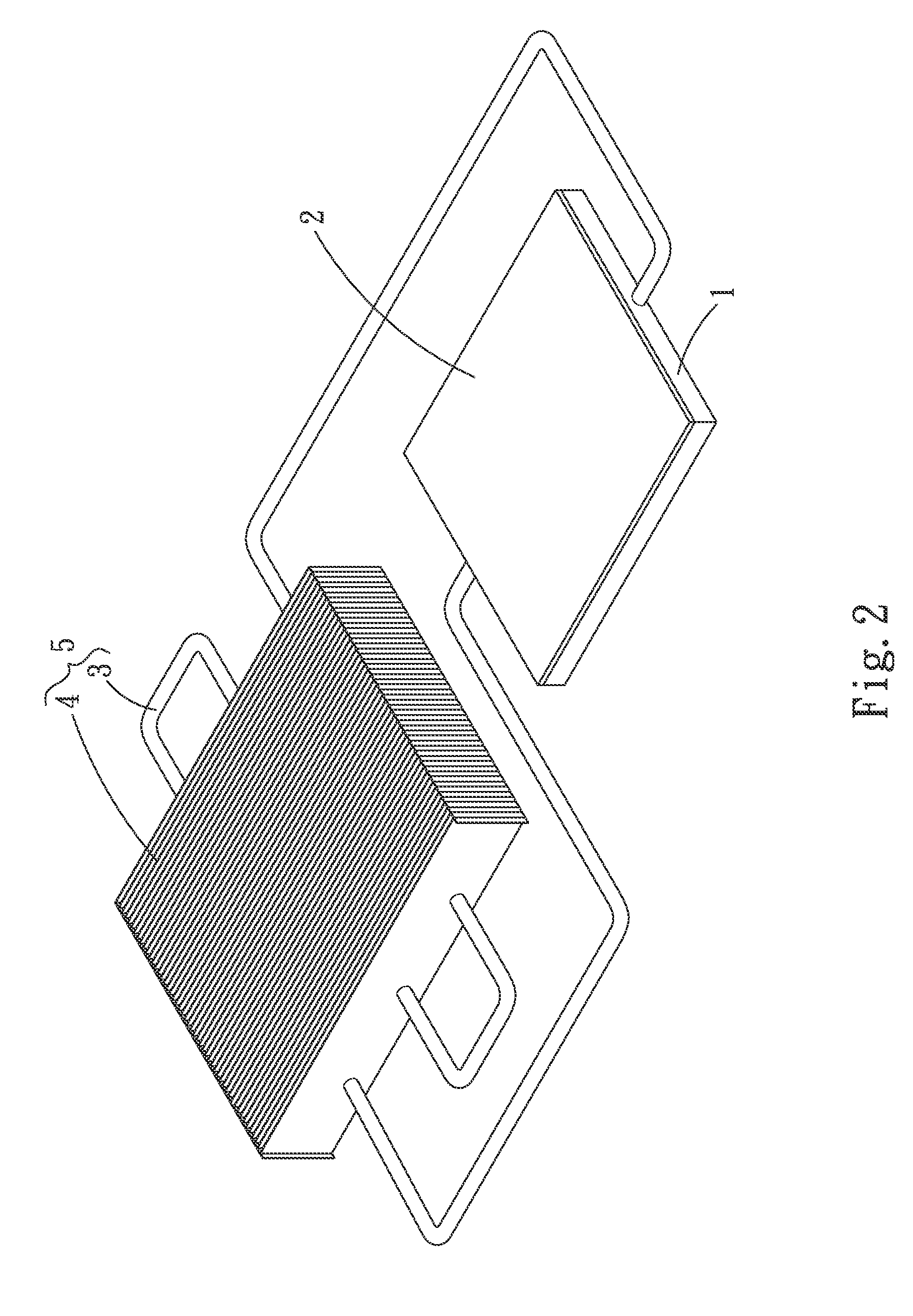Loop type pressure-gradient-drien low-pressure thermosiphon device
a thermosiphon device and gradient-driven technology, which is applied in the direction of indirect heat exchangers, lighting and heating apparatus, and semiconductor/solid-state device details, etc., can solve the problems of not being positively employed in heat exchangers for communication, home or industrial purposes, water cooling systems subject to the reliability of pumps, and possible leakage, etc., to achieve a wide range of heat transfer efficiency and high pressure , the effect of reducing the manufacturing cos
- Summary
- Abstract
- Description
- Claims
- Application Information
AI Technical Summary
Benefits of technology
Problems solved by technology
Method used
Image
Examples
Embodiment Construction
[0024]The present invention will now be described with some preferred embodiments thereof and with reference to the accompanying drawings. For the purpose of easy to understand, elements that are the same in the preferred embodiments are denoted by the same reference numerals.
[0025]Please refer to FIGS. 1, 2 and 3. A loop type pressure-gradient-driven low-pressure thermosiphon device according to a first embodiment of the present invention includes a case 1, a cover 2, a pipeline 3, and at least one heat-dissipating element 4.
[0026]The case 1 defines a chamber 11. In the chamber 11, there is provided a vaporizing section 12. The vaporizing section 12 includes a plurality of flow-guiding members 121 being arrayed to space from one another, such that at least one first flow passage 122 is formed between any two adjacent flow-guiding members 121. The first flow passages 122 respectively have at least one free end 122a communicating with a free zone 123 in the chamber 11.
[0027]In the il...
PUM
 Login to View More
Login to View More Abstract
Description
Claims
Application Information
 Login to View More
Login to View More - R&D
- Intellectual Property
- Life Sciences
- Materials
- Tech Scout
- Unparalleled Data Quality
- Higher Quality Content
- 60% Fewer Hallucinations
Browse by: Latest US Patents, China's latest patents, Technical Efficacy Thesaurus, Application Domain, Technology Topic, Popular Technical Reports.
© 2025 PatSnap. All rights reserved.Legal|Privacy policy|Modern Slavery Act Transparency Statement|Sitemap|About US| Contact US: help@patsnap.com



